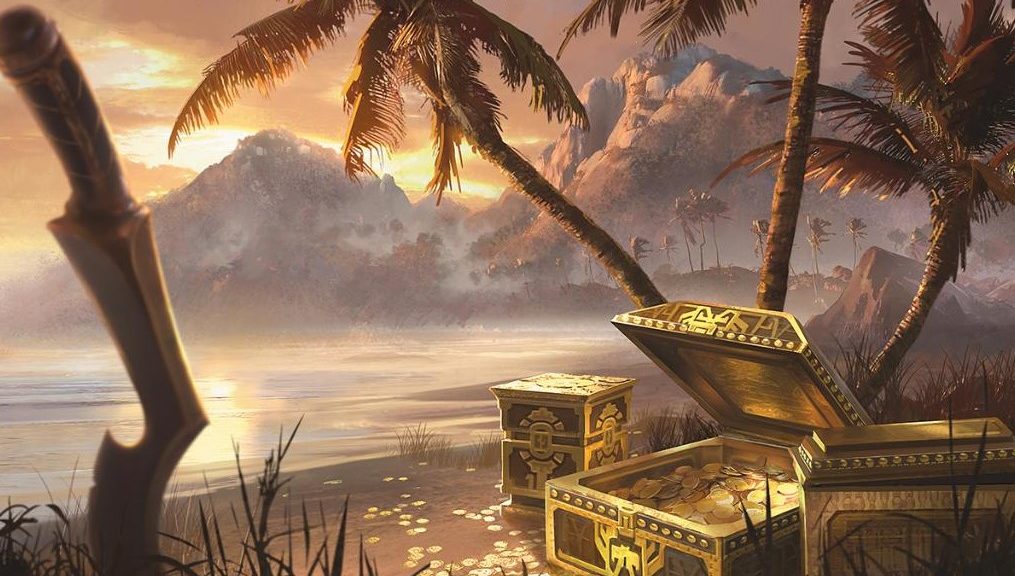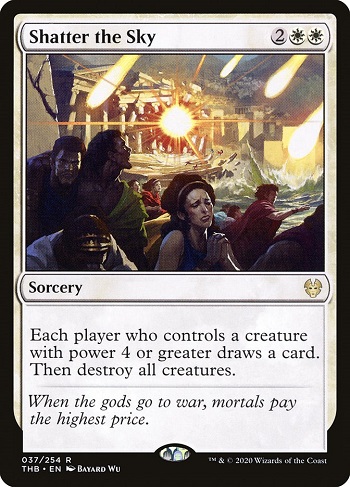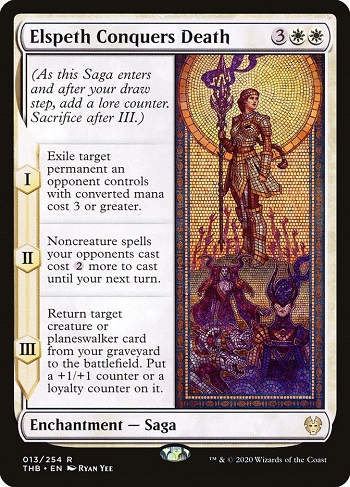Speculating on Magic the Gathering Online (MTGO) is very different from its paper counterpart, as explained in my overview of the MTGO economics system here. The boom and bust cycle of MTGO is rapid, sometimes occurring within a matter of hours. Additionally, users can short MTGO positions, an opportunity that is fairly unique outside of the stock market. The method for having new cards enter the market is also different, which only occurs mainly through drafting and treasure chests. This article discusses a few key MTGO developments from 2021 and the lessons learned that can be applied in the new year.
2021 was a very busy year on Magic Online! Too much occurred to discuss everything that took place, but below are a few notable events and my view of their implications for the future.
Modern Horizons 2
Each year the MTGO economy changes and evolves, creating unique opportunities for profit for those who are paying close attention. The defining moment of 2021 was clearly the release of Modern Horizons 2 (MH2), which reinvigorated the MTGO economy, reshaped the modern and legacy formats, and instantly became the most expensive draftable set on the platform. Right out of the gate key staples like Ragavan started expensive and later went to astronomical levels!
Endurance also quickly became expensive due to its obvious applications and quick adoption in both Modern and Legacy. Other key mythics initially slumped in price to a more reasonable level, only to rebound again over a few months.
MH2 was only supposed to be draftable for a few short weeks, but based on the high prices and demand, this timeline was quickly extended for another several months. MH2 then left the platform from Mid-September through October, only to return again thanks to public pressure. In total MH2’s drafting period was six months, which is about twice as long as Modern Horizons 1. Now that MH2 is officially “out-of-print”, it is likely that prices will rise over the coming months. Pressure on a few key staples may be tempered due to their heavy drop rate in Treasure Chests, like Ragavan, Solitude, Endurance, and Urza’s Saga, but overall, I expect the value of MH2 overall to rise during the first half of 2022.
Key Takeaways:
– New Modern and Legacy staples have a higher price ceiling than ever before. This shift is likely caused by less drafting, rental services buying large quantities of cards, and the shift to 20 mythics per set instead of 15.
– High priced supplemental sets like MH1, CMR, and 2XM have all shown strong returns over the long run – MH2 will likely continue that trend.
Several key rares from MH2 will likely see exceptional returns over the long term – see Force of Vigor as an example of what is possible (I’m looking at you Esper Sentinel).
Broken Cards Drive Crazy Prices
What do Valki, God of Lies and Prismari Command have in common? Both were very broken cards on MTGO for a small period of time.
Valki was broken in terms of power level – casting a 7 mana planeswalker for three mana was good enough to get it banned via rules errata. Prismari Command on the other hand had a serious bug on MTGO, allowing the caster to draw two cards while their opponent was forced to discard two cards. Crazy right? What’s even more crazy is that it took WOTC more than a day or two to fix the issue. Within a week Prismari Command hit more than 50 tickets as a rare, and Valki reached more than 100 tickets for a brief period of time. A very familiar phenomenon occurred with Omnath, Locus of Creation in 2020 before it’s ban in standard.
Key Takeaways:
– If a card is overpowered on MTGO, it will likely trigger a price spike that can create solid profits prior to any action taken by WOTC to correct the problem.
– Be quick – the opportunity to buy into these price spikes arise in the first few days after the release of a new set. If you wait for the tournament results to be posted, it’s likely too late.
Standard Sets Are Getting a Lot More Expensive
Historically the normal expected value (EV) of a newly released standard set on MTGO was 90 to 140 tickets. EV often peaked at 140 to 180 tickets near the end of redemption when users rushed to cash out digital cards for paper versions. Very few sets fell outside of this price range, with Core Set 2020 being a notable exemption, reaching 220 ticket EV at its peak.
Fast-forward to today, the three most recent sets AFR, MID, and VOW have been shattering historical expectations. AFR set a record for a standard legal set by climbing to 300 ticket EV at the end of its redemption window, doubling a normal standard set EV as the close of its redemption period draws near. VOW’s EV hit 170 tickets after its release based on early modern play, but has recently slumped to 145 tickets once the novelty of new cards wore off combined with competition with Innistrad Double Feature.
The reasons for this trend of higher set EV is likely multifaceted but all of them lead me to the conclusion that less supply exists for newer cards, especially mythics, creating an opening for substantially inflated prices for cards that become constructed staples.
The first potential reason for higher prices is that fewer people are drafting on MTGO. This is especially true for standard legal sets because most people draft these sets on Magic Arena. While this has been true for years now, I think this trend accelerated in the last year. Second, each of these sets have competed with MH2 for players, further reducing the number of daily drafters and reducing supply. This is a fairly unique circumstance due to MH2’s unprecedented popularity and impact, but it’s worth noting for future Modern Horizon sets and others like D&D Commander Legends and Double Masters 2022. Third, there are now 20 mythics in standard legal sets, up from the historical 15, making it harder to obtain any specific mythic, further pressuring supply. And finally, AFR and VOW were not great draft environments, likely reducing interest and thus supply.
The results of this trend are that rares and mythics from these sets produced strong speculation opportunities. The examples are too numerous to list, but here are a few that are representative of the larger trend: Chandra, Dressed to Kill, The Meathook Massacre, Lier, Disciple of the Drowned, Intrepid Adversary, Sorin the Mirthless, and Den of the Bugbear.
Key Takeaways:
– The increased value of standard legal sets can result in abnormally large gains for cards seeing strong competitive play.
– Modern is the top format for driving prices, but Standard has been impactful as well. Pioneer and can impact card prices too, for example see Cemetery Gatekeeper.
Follow the Streamers
Magic players used to watch GPs and Pro Tours and then buy cards that did well in the weekly tournaments. In the world of COVID-19, steamers are now king in moving card prices on MTGO.
Sometimes streamers have a limited amount of success, like 5-0’ing a league, that creates a modest bump that is fleeting because the deck isn’t real. For example in September Aspiringspike got a 5-0 on stream with a new Arclight Phoenix/Demilich brew, and then took 6th place in the Modern challenge with it, the price of both these cards tripped overnight. The deck was all hype and never accomplished much after that, but those who watched the 5-0 and bought in were paid off handsomely.
Steamers often showcase innovative new tech that reveal strong new cards before tournament results prove their merit. While I don’t recommend you spend all day watching streams, following each of them on social media to monitor their results is highly recommended.
Key Takeaways:
– Follow competitive magic streamers on Twitter and Twitch, such as @Aspiringspike, @kanister_mtg, @d00mwake, and @anzidmtg
– When you see a new innovative deck, evaluate it critically. Steamers try new things to develop interesting content – not necessarily to play the best deck. If they do well, evaluate the decklist critically and decide whether it’s worth an investment, and remember that hype alone can often affect MTGO prices.
Wrap Up
The MTGO economy is highly dynamic, evolving as the popularity of each format, the metagame, and card supply changes over time. Many changes happened to MTGO in 2021 alone, and 2022 may feature an even bigger shake up as Daybreak Games takes over the day-to-day maintenance of the program. To maximize your success in speculating, try to recognize the shifts in patterns and be adaptable, adjusting your tactics accordingly.





